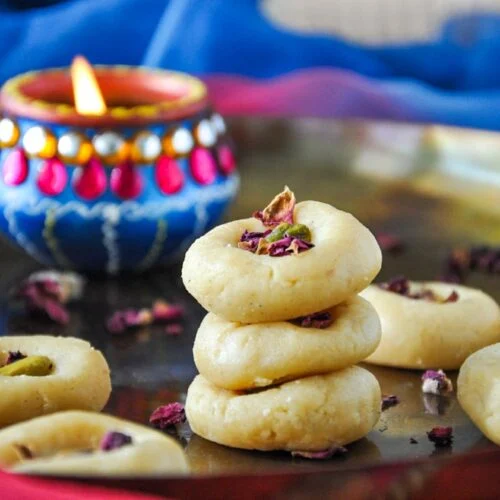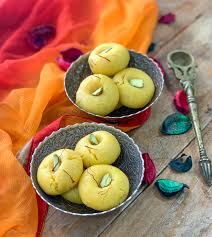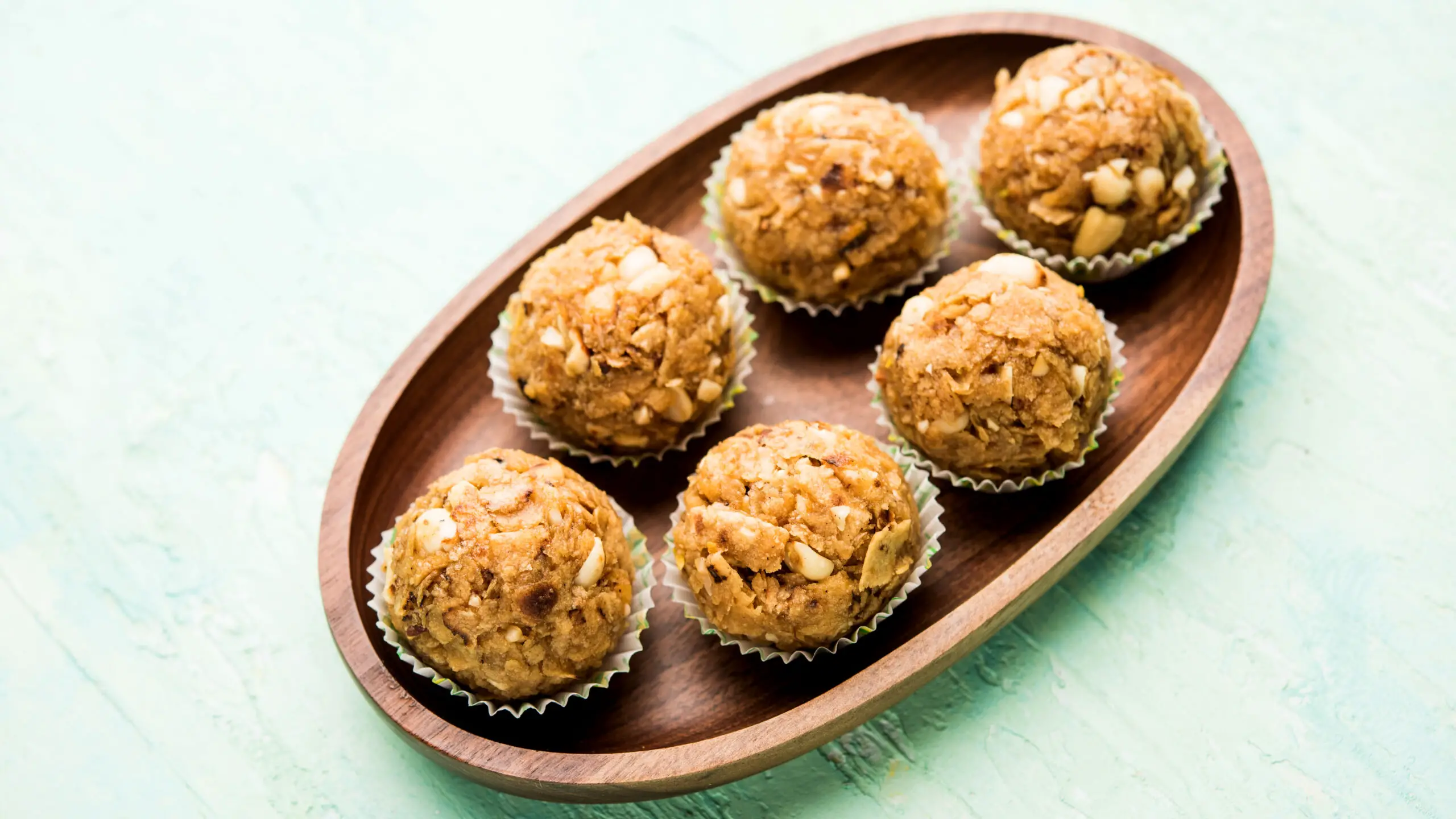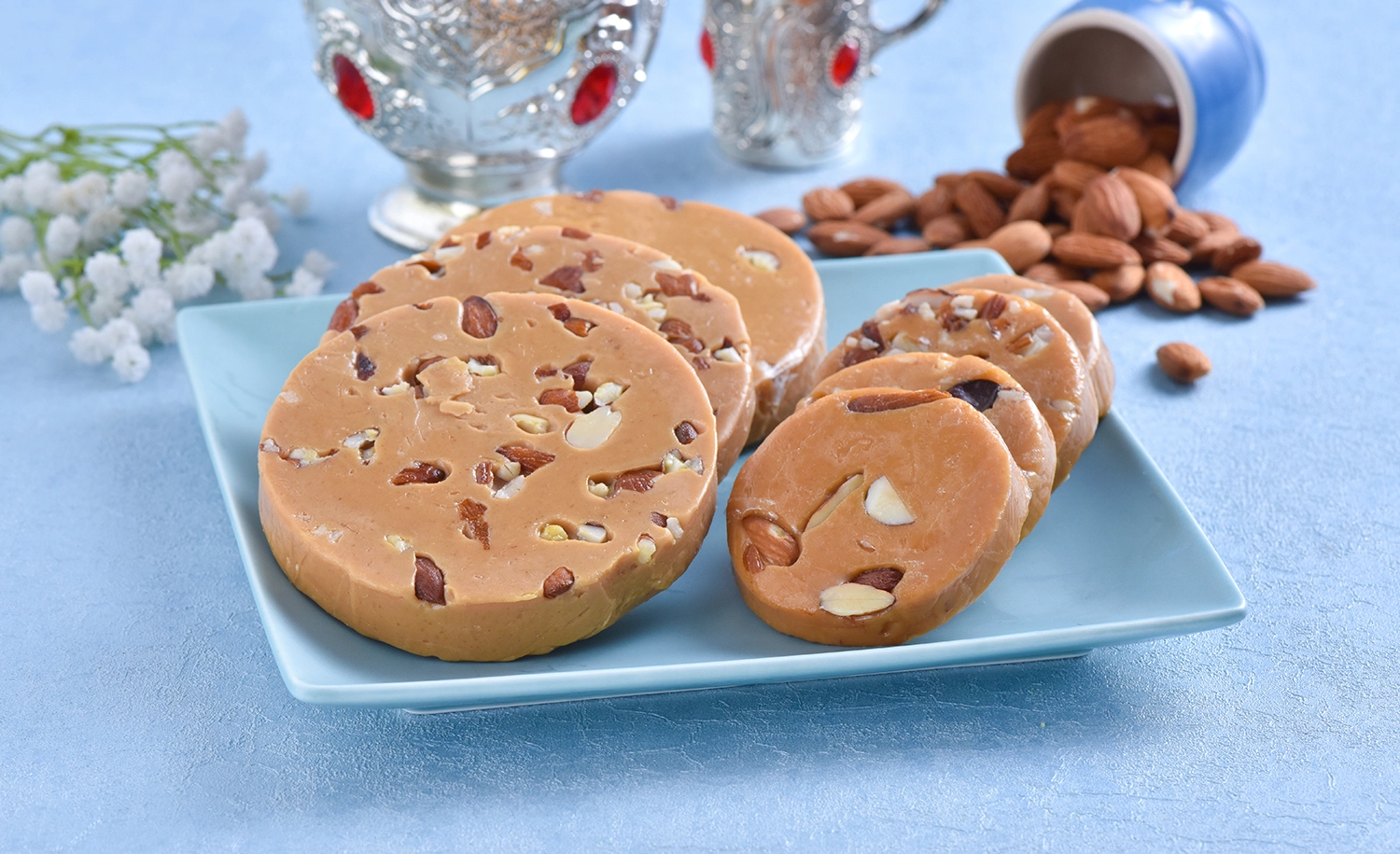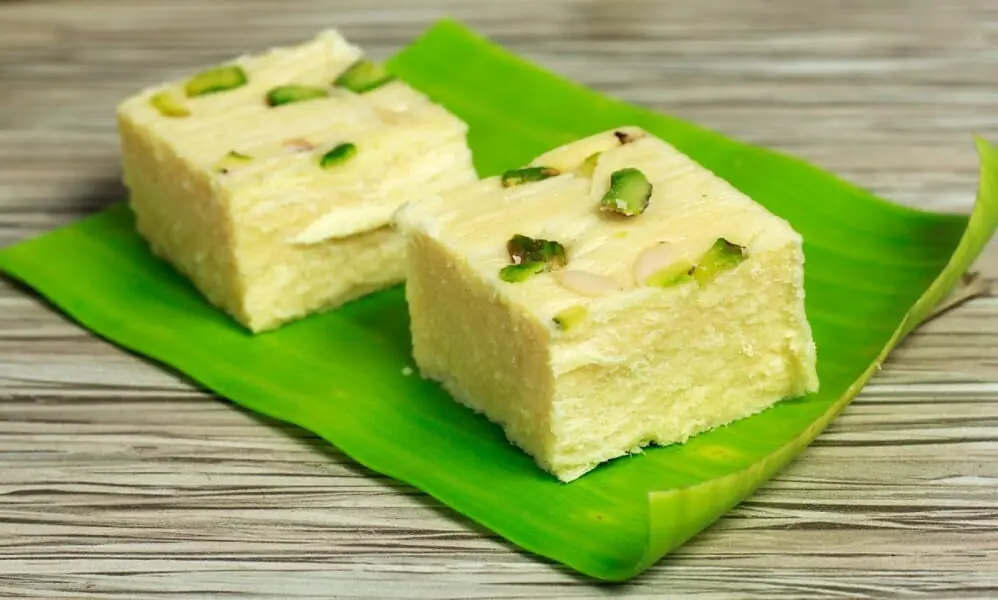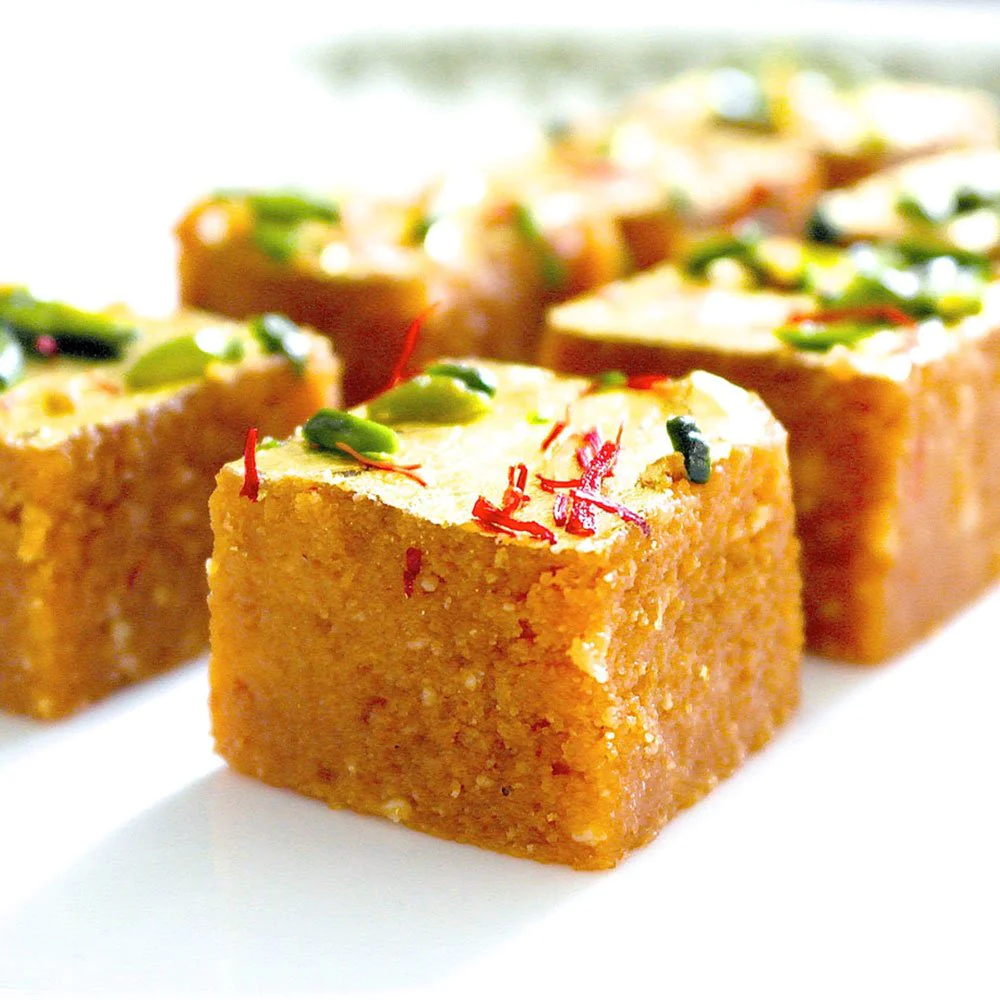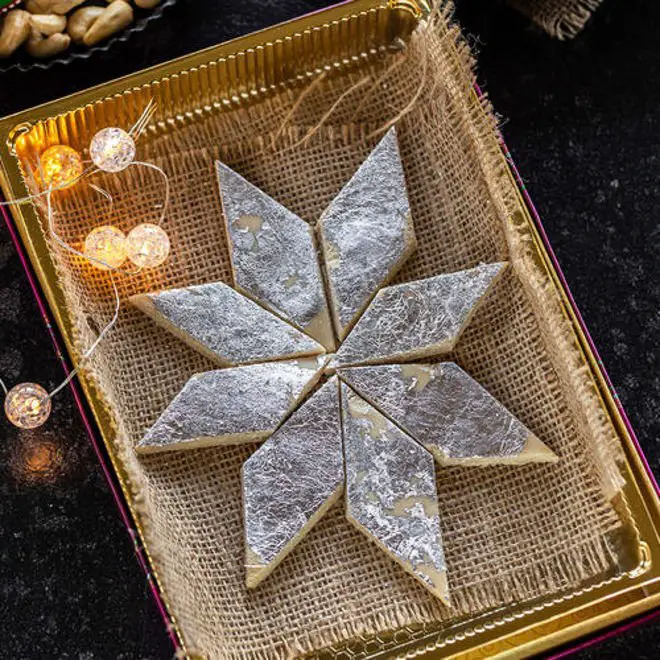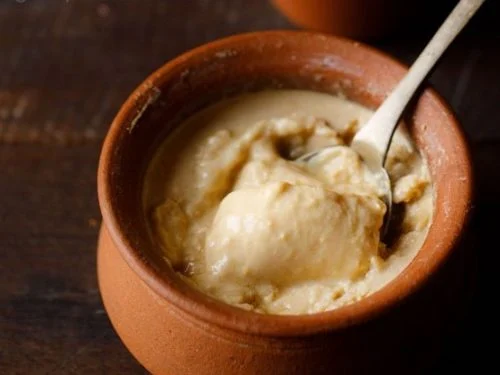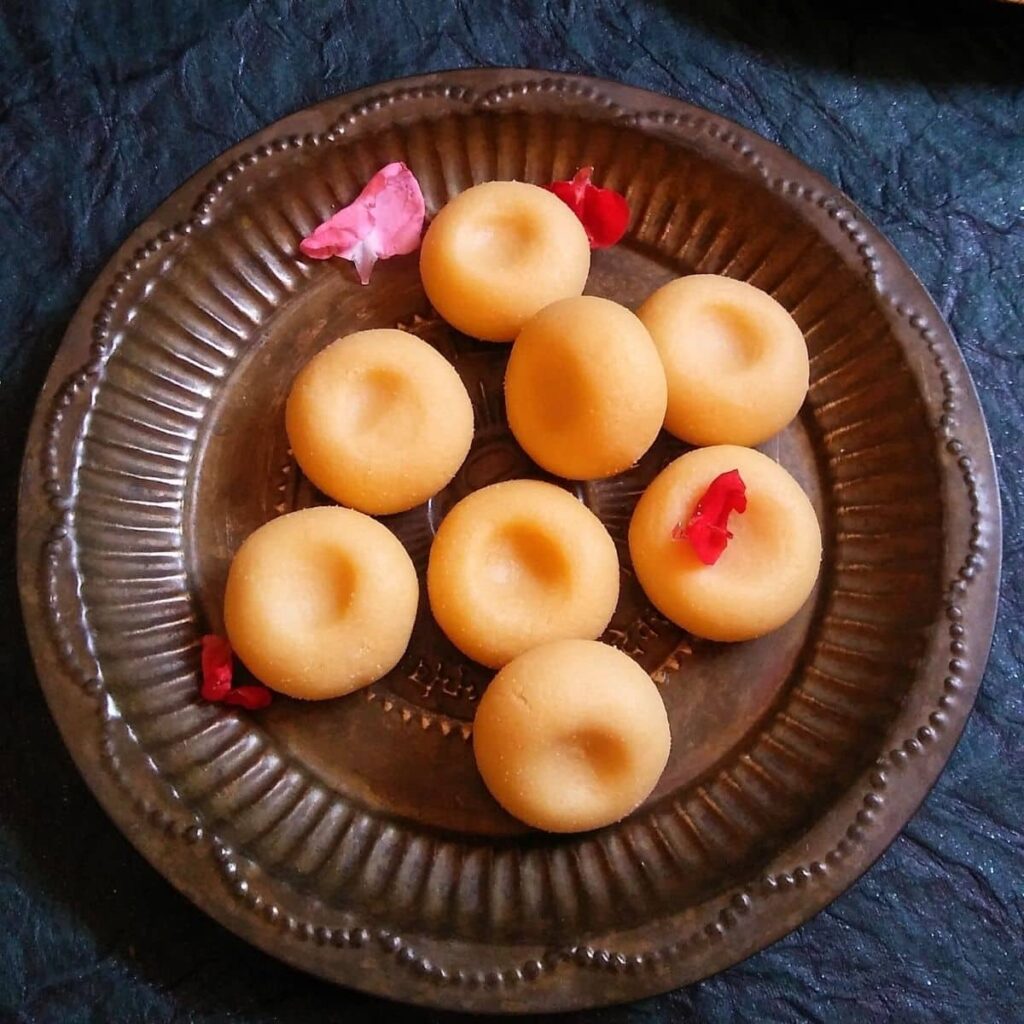About
“Peda” is a delightful and popular Indian sweet that holds a special place in the hearts of people across the country. With a rich history deeply rooted in Indian culinary traditions, Peda is a symbol of celebration, offering a burst of sweetness and flavor in every bite.
The base of Peda is typically made from khoya, also known as mawa, which is a concentrated form of milk obtained by simmering and reducing milk until most of its moisture evaporates. This process results in a dense, creamy, and slightly granular texture that serves as the foundation for the sweet.
the khoya is first gently cooked to eliminate excess moisture, preventing it from being overly sticky. The cooled khoya is then combined with powdered sugar, which adds a delicate sweetness to the treat. The amount of sugar can be adjusted to suit personal preferences, ensuring the Pedas are tailored to varying tastes.
To enhance the flavor profile, cardamom powder is commonly incorporated into the mixture. This aromatic spice lends a delightful and warm essence that complements the creamy khoya beautifully. For an extra touch of luxury, saffron strands may also be added, infusing the Pedas with their distinct golden hue and subtle earthy fragrance.
Once the ingredients are well combined, the mixture is briefly cooked to meld the flavors and achieve a smoother consistency. The transformation from a basic khoya mixture to a fragrant and velvety concoction is a testament to the care and attention that goes into crafting this sweet delight.
Shaping it is a hands-on endeavor. Small portions of the mixture are taken and rolled into smooth balls, then flattened slightly to resemble small discs. To add an element of visual appeal, a piece of chopped nut, often almonds or pistachios, can be pressed onto the top of each Peda.
As they cool and set, they solidify into delectable treats with a melt-in-your-mouth texture. The contrast between the slightly crumbly exterior and the creamy interior creates a harmonious balance that makes Pedas an indulgent pleasure to savor.
Whether enjoyed during festivals, weddings, or other special occasions or simply as a way to satisfy a sweet craving, Pedas hold a cherished place in the array of Indian desserts. Their time-honored recipe, rich cultural significance, and unforgettable taste make them a beloved part of the country’s culinary heritage.
Peda Perfection:
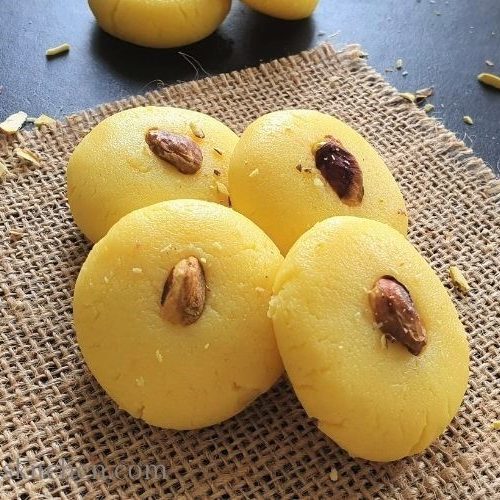
"Peda" is a traditional Indian sweet that holds a special place in the country's culinary culture. It is a milk-based dessert that is popularly enjoyed during festivals, celebrations, and various auspicious occasions.
Peda is typically made from "khoya" (also known as "mawa"), which is a concentrated form of milk obtained by simmering and reducing milk until most of its moisture evaporates. This process results in a dense, creamy, and slightly granular texture that is used as the base for Peda.
The basic Peda recipe involves cooking khoya along with sugar and flavorings such as cardamom powder or saffron. The mixture is then shaped into small round or flattened discs, often adorned with pieces of nuts like almonds or pistachios.
The flavor of Pedas can range from plain and traditional to various creative variations that incorporate ingredients like cocoa, nuts, dried fruits, and even modern elements like chocolate chips or Nutella.
Pedas are not only known for their delicious taste and creamy texture but also for their cultural significance. They are exchanged as gifts, offered to deities during worship, and shared among family and friends during festive occasions.
Ingredients
- 2 cups khoya (mawa)
- 1/2 cup powdered sugar (adjust to taste)
- 1/4 teaspoon cardamom powder
- A pinch of saffron strands (optional)
- Chopped nuts for garnishing (e.g., almonds, pistachios)
- Ghee (clarified butter) for greasing your palms
Instructions
- You can either make Khoya at home by simmering milk until it thickens and reduces, or you can buy it from a store to save time.
- Take the khoya in a heavy-bottomed pan and cook it on low heat for a few minutes to remove any excess moisture. Stir constantly to avoid burning.
- Once the khoya is slightly dry and crumbly, remove it from the heat and let it cool down a bit.
- Add powdered sugar, cardamom powder, and saffron strands (if using) to the khoya. You can adjust the amount of sugar based on your preference for sweetness.
- Mix the ingredients thoroughly until everything is well combined.
- Return the pan to low heat and cook the mixture for a few more minutes, stirring continuously. This step helps the flavors to meld and the mixture to become a bit smoother.
- Allow the mixture to cool down until it's comfortable to handle.
- Grease your palms with a little ghee to prevent sticking, and take small portions of the mixture to shape into round or flattened Pedas. You can press a piece of chopped nut on top for decoration.
- Optionally, you can garnish the Pedas with more chopped nuts like almonds or pistachios.
- Place the shaped Pedas on a plate or tray lined with parchment paper.
- Let the Pedas cool down completely and firm up. This might take an hour or so.
- Once the Pedas are set, they are ready to be served. You can store them in an airtight container at room temperature for a few days, or in the refrigerator for a longer shelf life
Notes
Recommended Products
As an Amazon Associate and member of other affiliate programs, I earn from qualifying purchases.
Nutrition Information:
Serving Size:
per pedaAmount Per Serving: Calories: 100-150Total Fat: 6-8gSaturated Fat: 3-4gSodium: 20-30mgCarbohydrates: 10-15gFiber: 0-1gSugar: 8-10gProtein: 2-4g
Various Creative Variations
Chocolate:
- Add cocoa powder to the khoya mixture to create a chocolatey flavor.
- You can also add chocolate chips or grated chocolate for extra richness.
- Top with chocolate shavings or cocoa powder for garnish.
Coconut :
- Mix desiccated coconut into the khoya mixture to infuse a tropical flavor.
- Garnish with toasted coconut flakes for added texture and appeal.
Fruit-Infused :
- Incorporate dried fruit like raisins, chopped dates, or figs into the khoya mixture.
- The natural sweetness of the fruits adds depth to the flavor profile.
Nutty :
- Add finely chopped or ground nuts directly into the khoya mixture for an extra crunch.
- You can choose a single-nut variety or a mix of your favorites.
Cardamom and Pistachio :
- Enhance the traditional cardamom flavor by incorporating finely ground pistachios into the mixture.
- Garnish with crushed pistachios for a beautiful green hue and nutty texture.
Kesar Peda :
- Intensify the saffron flavor by using more saffron strands and a touch of milk.
- The vibrant orange color and exotic aroma make this variation stand out.
Fusion Flavors:
- Experiment with flavors from other cultures, such as adding matcha powder for a Japanese-inspired Peda or using maple syrup for a unique twist.
Healthy Peda:
- Use alternatives to refined sugar, such as jaggery or honey, for a healthier version.
- Incorporate whole grains like oats or amaranth for added nutrition and texture.
Dry Fruit Peda:
- Make a mixture of finely chopped dried fruits like almonds, cashews, and raisins, and fold them into the khoya.
- The mixture will be wonderfully textured and bursting with fruity goodness.
Frequently Asked Questions (FAQs)
Q: Can I substitute Khoya with anything else?
A: If khoya is not available, you can use condensed milk to make this recipe. However, keep in mind that condensed milk is sweeter and has a different flavor profile than traditional khoya.
Q: What’s the role of cardamom powder in Pedas?
A: Cardamom powder adds a delightfully aromatic flavor to it. It complements the sweetness of the khoya mixture and enhances the overall taste.
Q: How do I prevent the Peda mixture from sticking to my hands while shaping?
A: Grease your palms with a small amount of ghee before shaping the Pedas. This prevents the mixture from sticking and makes it easier to handle.
Q: Can I make Pedas without sugar?
A: Yes, you can use alternatives to refined sugar, such as jaggery, honey, or other natural sweeteners. Keep in mind that the flavor and texture of the Pedas might be slightly different.
Q: How long can I store Pedas?
A: Properly stored, it can be kept at room temperature in an airtight container for a few days. If the weather is warm or humid, storing them in the refrigerator is better.
Q: Can I freeze Pedas for later use?
A: While it’s possible to freeze this their texture might slightly change upon thawing. If you plan to freeze them, place them in an airtight container and thaw them gradually in the refrigerator.
Q: Can I add nuts or dried fruits to the khoya mixture?
A: Yes, you can definitely add chopped nuts, dried fruits, or other flavorings to the khoya mixture to customize the taste and texture of the Pedas.
Q: Can I make Pedas with reduced-fat milk or non-dairy milk?
A: Traditional Pedas are made with full-fat milk to achieve a rich texture. While you can experiment with reduced-fat milk or non-dairy milk, the final texture and taste might differ.
Q: Are there any gluten-free variations of Pedas?
A: it is made with khoya typically gluten-free. However, always ensure that the ingredients you use, especially flavorings and garnishes, are also gluten-free.
You Might Also Like:
- Aate ka Halwa Recipe:
- Indian Tricolour Cupcake
- Kheer Mohan Recipe:
- Mysore Pak Recipe
- Badam Katli Recipe
- Rabdi malpua recipe:
follow us on Instagram, Facebook, and youtube

